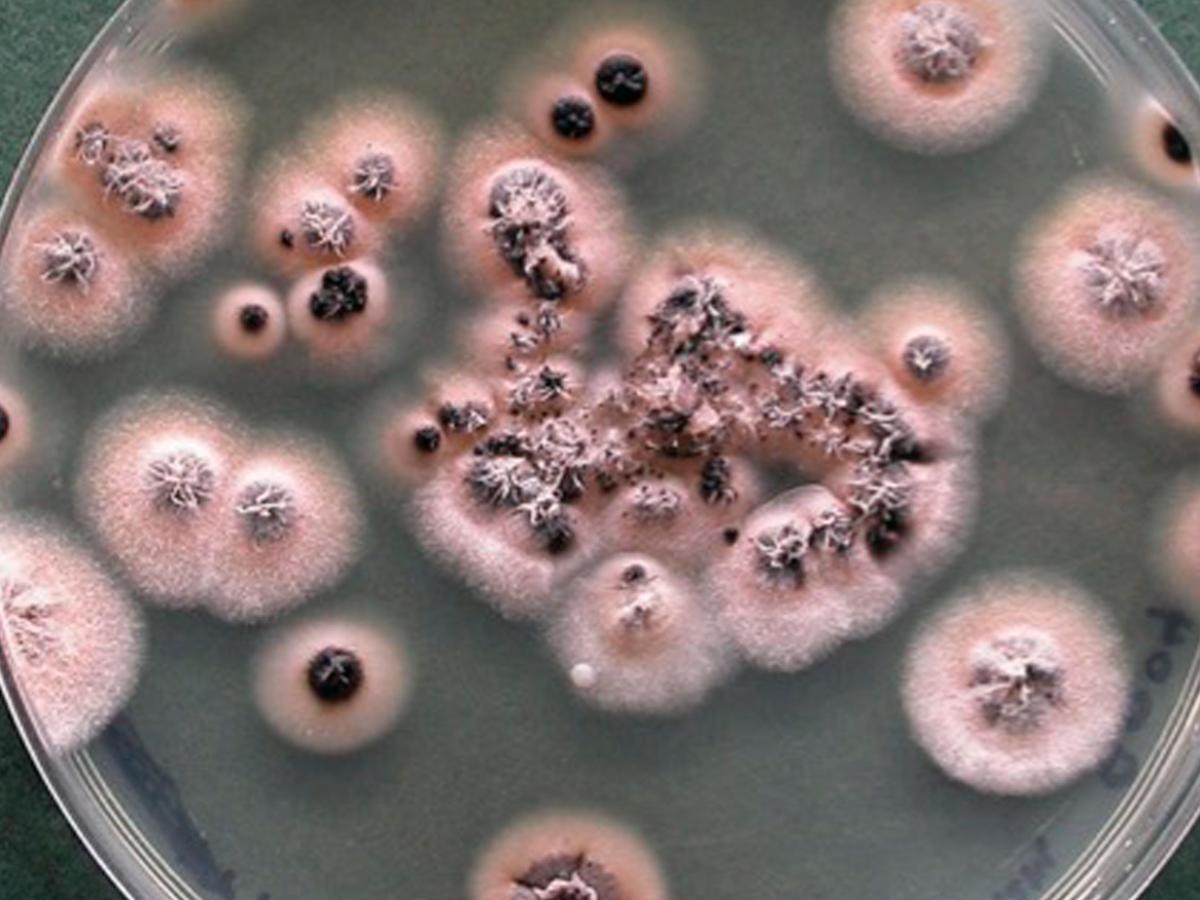Coniochaeta hoffmannii
Synonymy: Lecythophora hoffmannii; Phialophora hoffmannii
In response to recent changes in the nomenclature for pleomorphic fungi, Khan et al. (2013) have transferred all Lecythophora species to Coniochaeta.
The genus Coniochaeta is morphologically similar to Phialemonium. It also forms adelophialides, but in Coniochaeta, these conidiogenous cells show conspicuous collarettes, and the colonies are usually pink-salmon to dark brown, although discrete phialides like those of Acremonium may also be present (Perdomo et al. 2011b). Coniochaeta hoffmannii has been associated with cases of subcutaneous infections, keratitis, sinusitis, peritonitis, and canine osteomyelitis. Coniochaeta mutabilis has been described to be a causative agent of human peritonitis, endocarditis, endophthalmitis, and keratitis (Perdomo et al. 2011b).
RG-1 organism.

Culture of Coniochaeta hoffmannii.
Morphological description:
Colonies are flat, smooth, moist, pink to orange, with regular and sharp margin; reverse pink. Hyphae are narrow, hyaline, producing conidia laterally from small collarettes directly on the hyphae, or from lateral cells which are sometimes arranged in dense groups; lateral cells flask-shaped or nearly cylindrical. Collarettes are unpigmented, about 1.5 µm wide. Conidia are hyaline, smooth and thin-walled, broadly ellipsoidal to cylindrical or allantoid, 3.0-3.5 x 1.5-2.5 µm, produced in slimy heads.

Hyphae with small collarettes and conidia of Coniochaeta hoffmannii.
Note:
Coniochaeta and Phialemonium species are poorly differentiated morphologically, and are difficult to identify. They may also be confused with poorly sporulating Fusarium or Acremonium species.
Molecular identification:
Khan et al. (2013) used a combined sequence data set of the ITS region, D1/D2, actin and β-tubulin genes to resolve the unique phylogenetic status of this species.
| No | <0.03 | 0.06 | 0.125 | 0.25 | 0.5 | 1 | 2 | 4 | ≥8 | |
|---|---|---|---|---|---|---|---|---|---|---|
| AmB | 7 | 1 | 5 | 1 | ||||||
| ISAV | 4 | 3 | 1 | |||||||
| VORI | 7 | 1 | 2 | 3 | 1 | |||||
| POSA | 7 | 2 | 4 | 1 | ||||||
| ITRA | 7 | 2 | 4 | 1 |
References:
de Hoog (1983), de Hoog et al. (2000, 2015), Perdomo et al. (2011b), Khan et al. (2013).
